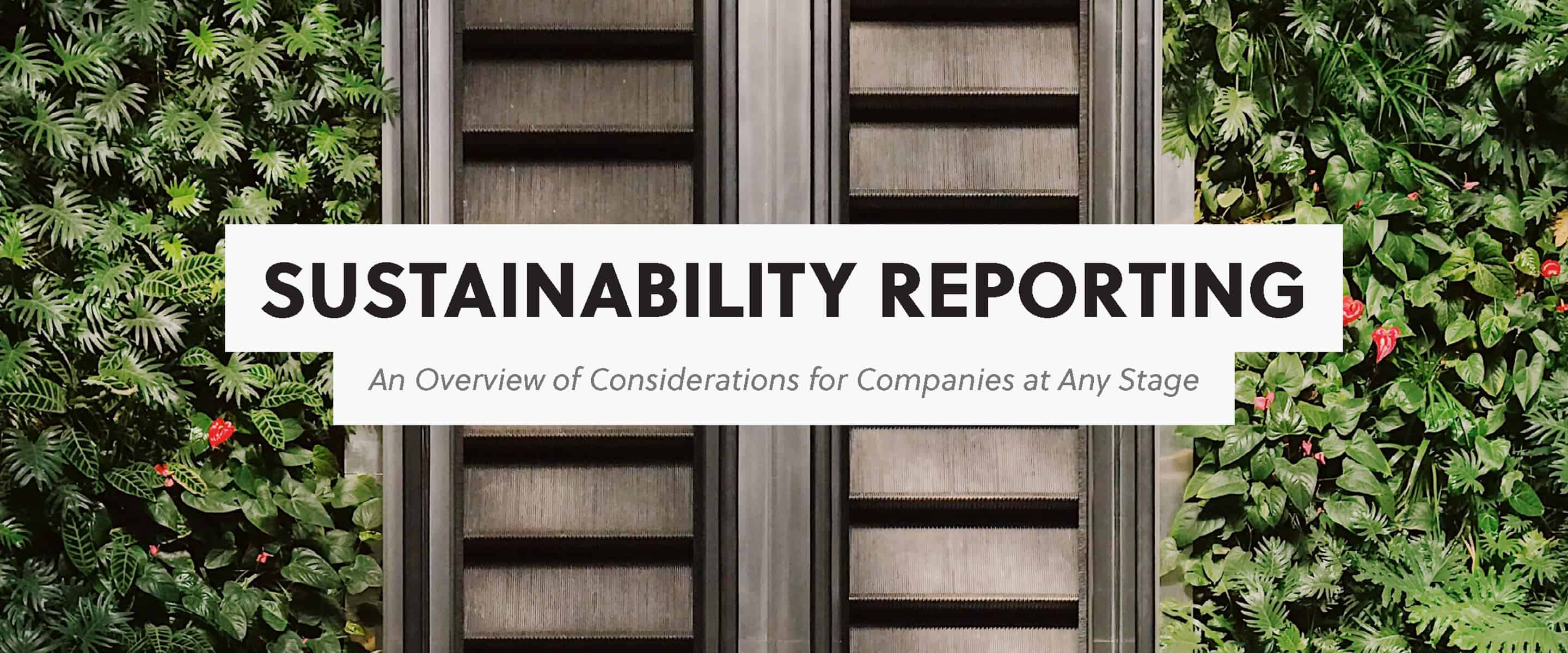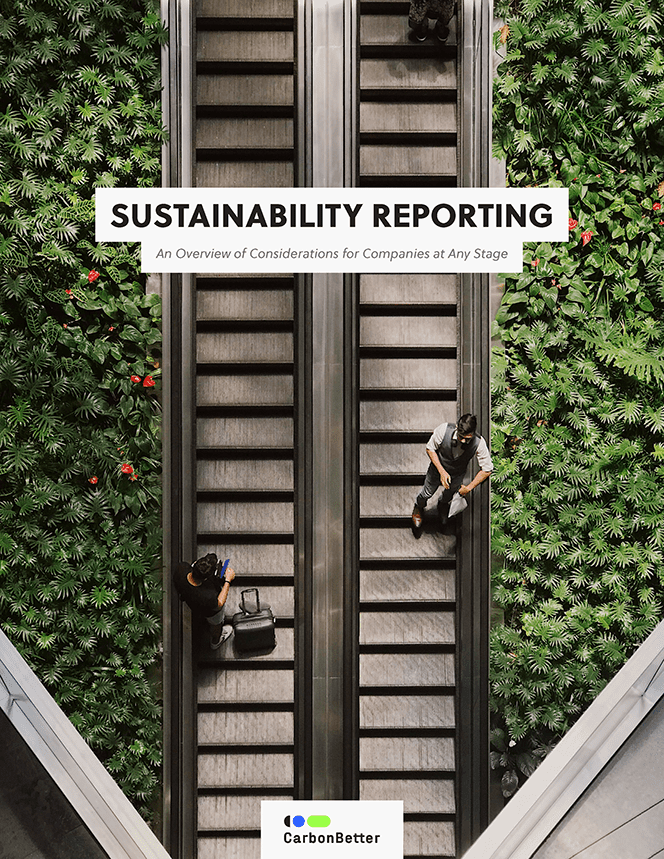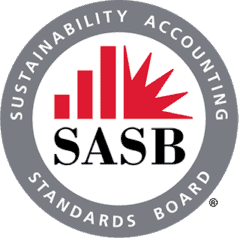Sustainability Reporting Overview


Download the White Paper
Sustainability reporting serves as a valuable tool to achieve corporate commitments and better manage climate-related business risks. This white paper walks you through what’s typically included and what should be considered.
An overview of sustainability report considerations for companies at any stage of growth.
The mobilization of stakeholders to achieve net-zero goals will benefit all communities across the United States (US) and globally by modernizing the economy in ways that will benefit public health, spur sustainable growth, and improve quality of life. However, achieving this future requires immediate and sustained investments to curb the climate crisis. Moving forward, business executives will play a crucial role in this global transformation by committing to sustainable operations management and sustainability reporting.
A sustainability report documents and tracks a company’s measured and estimated environmental impacts. It helps provide greater transparency about the company’s contribution and progress towards sustainable development to its stakeholders. Quantifying a baseline of carbon emissions allows companies to assess a timeline and project annual targets for achieving their sustainability goals and avoid furthering climate change. Depending on the jurisdiction where companies operate, laws and regulations—such as mandatory sustainability disclosures—can hold large companies accountable for measuring their carbon emissions and taking the necessary steps to mitigate their environmental footprint.
UPDATE: Since the release of this whitepaper, the landscape of sustainability reporting continues to evolve. Recent developments in key frameworks and regulations, including the IFRS S1 & S2 standards, the EU’s Corporate Sustainability Reporting Directive (CSRD), and changes in the US regulatory environment, have introduced new dimensions to sustainability disclosures. While our whitepaper provides a solid foundation, it’s essential to stay informed about these ongoing changes. For the latest insights and guidance on navigating these developments, we invite you to explore the following blog posts:
What’s Included in a Sustainability Report
The contents of sustainability reports can vary depending on the reporting framework used and the type of information the business wants to disclose. However, reports generally include the energy and resources the business consumes and corresponding environmental impacts, including carbon emissions, and the water and waste it discharges. To improve transparency and accounting, carbon emissions sources are categorized into three types: Scope 1, Scope 2, and Scope 3. Learn more about these considerations in the full report.
Mandatory & Voluntary Disclosure Considerations
Sustainability reporting is either mandatory or voluntary. Governments around the world have made commitments towards reducing carbon emissions and achieving net-zero goals, and required regulatory sustainability disclosures help inform global environmental policy decisions and track progress towards lower-carbon economies. Survey findings reveal that 80% of N100 companies worldwide now report on sustainability, with 65% disclosing carbon reduction within their reports.
The European Union (EU) recently passed the Corporate Sustainability Reporting Directive (CSRD) which extends the scope of the Non-Financial Reporting Directive (NFRD) to all large companies listed on regulated markets, making it one of the broadest mandatory disclosure policies.
In the US, the Greenhouse Gas Reporting Program (GHGRP) went into effect in 2009 and is considered their most extensive reporting mandate. It assesses large emitters that exceed annual greenhouse gas emissions of 25,000 MT CO2e. Many small businesses in the US are not required to report their emissions to the US Environmental Protection Agency (EPA), which limits the reporting of data that is valuable to meeting climate change goals.
The demand for sustainability reporting will continue to grow as it becomes the standard for businesses of all sizes, including public and private companies. Regardless of mandatory statutes, sustainability reporting is considered a best practice that businesses can leverage to appeal to stakeholders and identify internal areas of improvement, in addition to other benefits. Download the full report to learn more about forthcoming potential climate-related disclosures.

“Being a pioneer in sustainability reporting will attract more investors and consumers but also lead the way for other businesses to follow suit by influencing other businesses to become more conscientious of their environmental footprint.”

SUSTAINABILITY SPOTLIGHT: BEATBOX BEVERAGES
The fastest-selling ready-to-drink cocktail and wine brand in the US is also on track to become the most sustainable.
CarbonBetter helped BeatBox measure and report on its Scope 1, 2, and 3 impacts, and implement an Environmental Management System (EMS) that tracks environmental performance and aligns its 75+ employees.
The Benefits of Sustainability Reporting
While sustainability and carbon emissions reporting may not yet be required for the majority of businesses within the US, pressures from investors and consumers have pushed some companies to proactively address climate change risk through voluntary reporting. The public is becoming better informed and wants to support businesses that make conscientious efforts towards improving the environment.
For the largest public companies, voluntary reporting proves to be a valuable tool for managing risks and their public images. The Governance and Accountability Institute reported that 70% of the Russell 1000 and 92% of the S&P 500 published sustainability reports in 2020.
The benefits of sustainability reporting that are explored in the white paper include:
- Increased Shareholder Value
- Reduced Operating Costs
- Supply Chain Resiliency
- Increased Market Share
- A More Sustainable Industry
Completing Your First Sustainability Report
In light of forthcoming regulations and the benefits of voluntary reporting, your company may consider writing its first sustainability report. When you are preparing for your initial sustainability report, there are several considerations to keep in mind. This white paper includes details about:
- Sustainability reporting frameworks
- Sustainability reporting scopes
- Sustainability reporting organizational structure
- Sustainability reporting data gathering
- Calculation methodologies
- Preparing the final report
Sustainability Reporting Frameworks





Taking Steps Towards Sustainability
At CarbonBetter, we believe in progress over perfection. It’s not about doing everything—it’s about doing something. With over a decade of experience in the energy industry, we partner with organizations to guide them in the transition to a net-zero economy. CarbonBetter’s sustainability specialists work closely with partners across all industries to integrate sustainability solutions seamlessly into any business.
CarbonBetter helps organizations of all sizes measure, reduce, report, and offset their emissions, and tell stories about their sustainability journey.
Telling stories about sustainability efforts helps other organizations take action that will then, in turn, inspire others—it's never too early or late to start.

Download the Sustainability Reporting White Paper
Sustainability reporting serves as a valuable tool to achieve corporate commitments and better manage climate-related business risks. This white paper walks you through what's typically included and what should be considered.